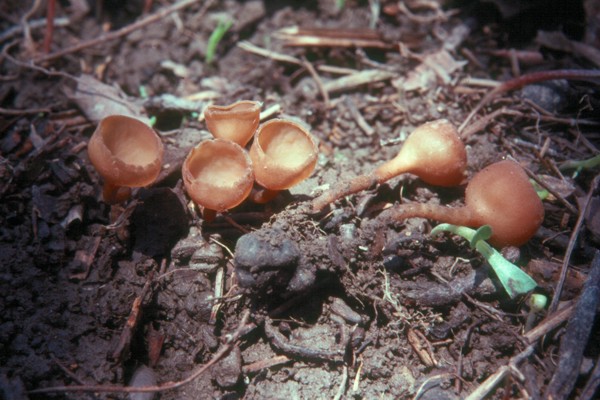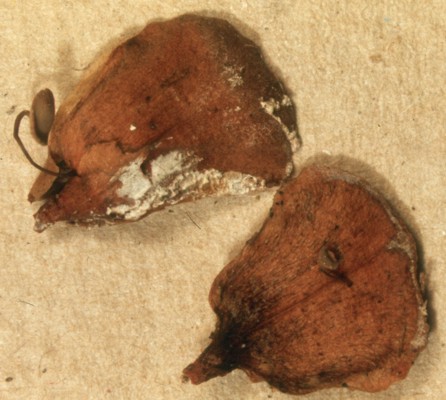Home >> Diversity and classification >> True fungi >> Dikarya >> Ascomycota >> Discomycetes >> Inoperculate Discomycetes >> Sclerotiniales
SCLEROTINIALES: THE STROMATIC CUP FUNGI

The stromatic cup fungi are similar to the non-stromatic cup fungi in their production of fleshy exposed apothecia. These apothecia often arise from sources buried in the ground or in layers of plant litter and often have quite long stipes that raise them up into the open air. What distinguishes this group is the production of stromatic tissues that eventually give rise to the apothecia. A stroma (plural: stromata) is a specialized type of fungal tissue composed of tightly compacted hyphae and forming a distinct matrix. The stroma may incorporate materials of non-fungal origin or it may be entirely fungal. When a stroma takes the form of a discrete seed-like structure it may be called a sclerotium (plural: sclerotia). Sclerotia are produced by many fungi but are especially characteristic of the Sclerotiniales.
The picture at right illustrates Dumontinia tuberosa, a large and conspicuous member of the Sclerotiniales. It is a parasite of species of the plant genus Anemone. In common with most Sclerotiniales it is a plant parasite and infects new hosts at the beginning of their growing season. It grows within its host for several months, and as the growing season draws to a close produces stromatic tissues, often sclerotia, on some part of the host. These stromatic tissues survive through the dormant season and give rise to apothecia at the beginning of the next season. In the picture the large apothecia of D. tuberosa can been to arise from a spherical sclerotium, made up partly of fungal and partly of plant tissues.

The Sclerotiniales can be quite specific in their choice of plant host, a fact that is often helpful in identifying them. However, some species, including Sclerotinia sclerotiorum, with more than 400 known hosts, attack a wide variety of plants. While some species such as S. sclerotiorum are agricultural pests causing economic losses most occur on wild plants and do very little damage. Ciboria rufo-fusca, figured at left, occurs on balsam fir and produces its stroma on the cone scales of the host. In the spring, as the new cones begin to develop, the fungus produces its apothecia on the old fallen cone scales. Other species can be found in the spring in our area on dried fallen blueberries, birch catkins from the previous season and many other overwintered plant parts.